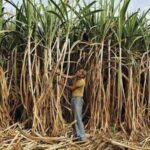The Cabinet Committee on Political Affairs (CCPA) on Wednesday approved the inclusion of caste data in the upcoming population census. Union Minister Ashwini Vaishnaw made the announcement, underscoring the constitutional framework that makes Census a Union subject. The move revives a long-standing debate over caste-based enumeration and its use in governance, policy, and politics.
📌 The CCPA’s decision to include caste data marks a policy shift, reviving caste enumeration that had been absent since 1931, barring SC/ST data.
📌 Vaishnaw reiterated that only the Union Government can officially conduct a census, dismissing the credibility of state-level surveys done with political motives.
📌 Vaishnaw slammed the Congress and INDIA alliance, saying they used caste surveys for political gains without transparency or legal mandate.
📌 Post-Independence censuses (1951–2011) included data on Scheduled Castes and Scheduled Tribes but excluded broader caste enumeration.
📌 The last full caste-based Census was done in 1931. Although caste data was collected in 1941, it was never published due to the global crisis of World War II.
📌 Without a proper caste census, there are only estimates—like the Mandal Commission’s 52 per cent figure for OBCs—used for policymaking and electoral strategy.
📌 The UPA government initiated the Socio Economic and Caste Census (SECC), but only socioeconomic data was released—caste data was withheld.
📌 While leaders like Pankaja Munde and parties like Congress have supported the census, the implementation has often stalled due to political complexities.
📌 Past efforts have faced significant bureaucratic and classification challenges. Issues like multiple caste names, overlapping categories, and unclear status of inter-caste and migrant individuals make accurate data collection complex.
📌 Different states maintain varying lists of OBCs, with some including sub-categories like Most Backward Classes. These inconsistencies have complicated past attempts at creating a unified caste data set.








